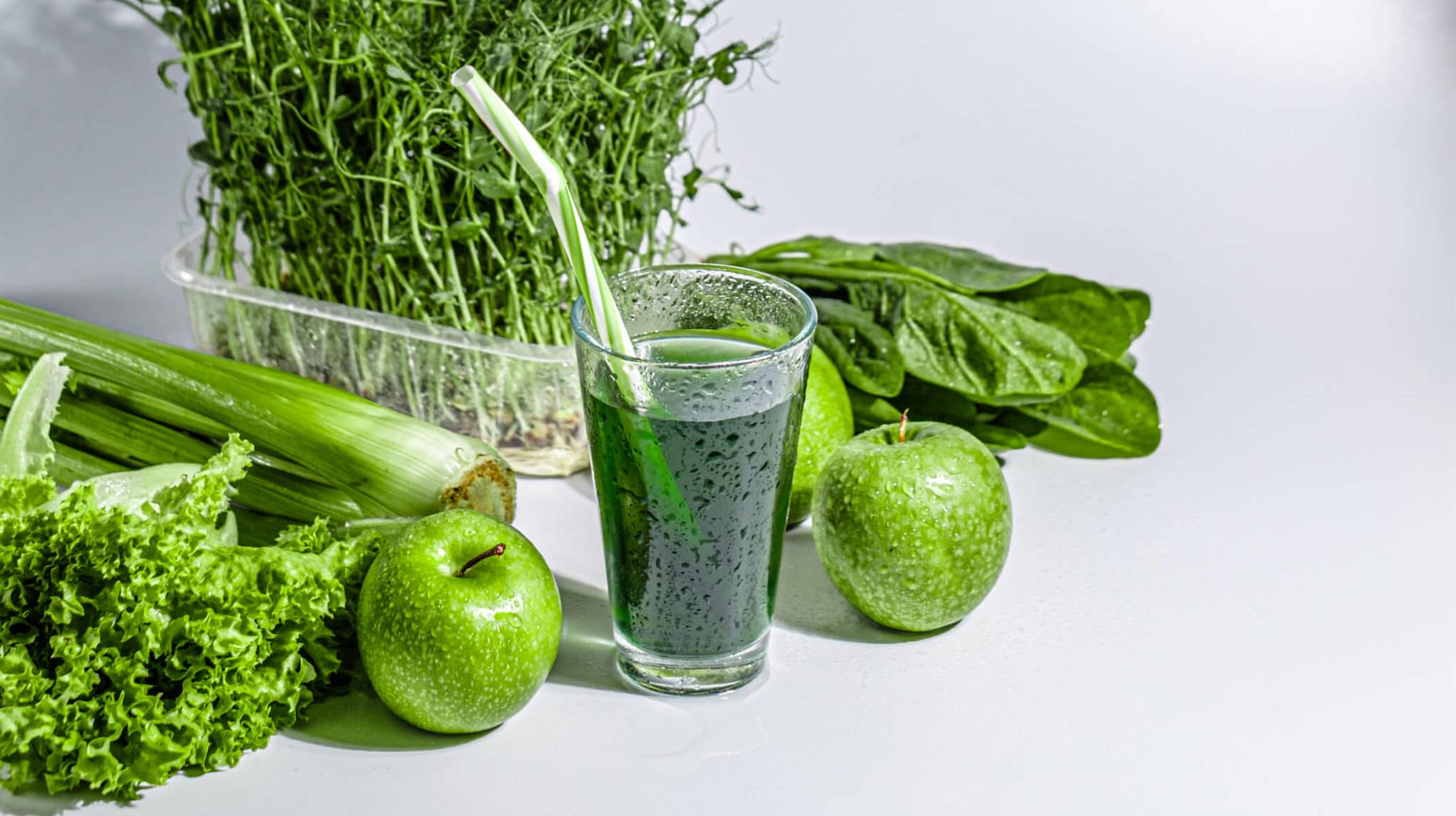
The Benefits of Chlorophyll
Some research suggests that chlorophyll might aid in skin healing, cancer prevention, and weight loss, among other potential benefits. Natural sources of chlorophyll include wheatgrass and parsley. However, it’s advisable to consult a doctor before starting chlorophyll supplements.
So, what exactly is chlorophyll?
Chlorophyll is crucial for keeping plants green and thriving. It contains vitamins, antioxidants, and therapeutic properties that could be advantageous for your overall well-being.
You can obtain chlorophyll from plants or as supplements, although the latter might be more effective. This is because chlorophyll may not survive the digestion process long enough for absorption.
Chlorophyll supplements actually consist of chlorophyllin, which contains copper instead of magnesium. When chlorophyllin is ingested, the presence of copper in the plasma suggests absorption has occurred.
Fortunately, chlorophyllin shares similar properties with chlorophyll. When you’re perusing chlorophyll supplements, you might notice claims such as:
- Boosting the immune system
- Combating fungal infections
- Detoxifying the blood
- Cleansing the intestines
- Neutralising unpleasant odours
- Providing an energy boost
- Potentially preventing cancer
However, research findings regarding the actual health benefits of chlorophyll are varied and inconclusive. More extensive and rigorous studies are necessary to assess the potential advantages of chlorophyll.
So, what are the potential benefits of chlorophyll?
Researchers are continually delving into how chlorophyll could positively impact health and wellness. Let’s explore what we currently know.
Skin healing
Chlorophyllin has displayed potential effects in reducing inflammation and inhibiting bacterial growth in skin wounds.
A 2008 review of wound care research incorporated various studies on ointments containing papain-urea-chlorophyllin. While individual studies suggested the efficacy of this ointment compared to other treatments, larger, better-controlled studies are required to confirm these findings.
Chlorophyllin may also prove effective for other skin conditions, as indicated by the results of two pilot studies. A 2015 pilot study involving 10 individuals with acne and large pores observed improvements in skin condition with the use of topical chlorophyllin gel over three weeks.
Another 2015 pilot study, also involving 10 participants, noted skin improvement in individuals with sun-damaged skin following the application of topical chlorophyllin over eight weeks.
Blood enhancement
Some individuals propose that liquid chlorophyll can enhance blood quality by improving red blood cells.
A 2004 pilot study suggested that wheatgrass, which contains approximately 70 percent chlorophyll, reduced the requirement for blood transfusions in individuals with thalassemia, a blood disorder. However, it’s essential to note that the study authors did not attribute the reduced need for transfusions directly to chlorophyll.
Dr. Chris Reynolds, a clinical expert in wheatgrass, believes that the benefits likely stem from wheatgrass itself rather than chlorophyll. The precise mechanism by which wheatgrass affects red blood cells remains unclear, but it’s believed that chlorophyll is destroyed during the production of wheatgrass extract.
Detoxification and cancer prevention
Researchers have investigated the impact of chlorophyll and chlorophyllin on cancer.
An animal study conducted on trout found that chlorophyll, depending on the dosage, reduced the incidence of liver and stomach tumors.
A 2018 study examined the effect of chlorophyll on the growth of pancreatic cancer cells. The researchers discovered that daily oral intake of chlorophyll significantly decreased tumour size in mice implanted with human pancreatic cancer cells.
While the results of animal studies are promising, human trials have only recently commenced. A small study involving four volunteers found that chlorophyll might mitigate the effects of ingested aflatoxin, a compound linked to cancer.
In line with an older study from China, where chlorophyllin consumption led to a 55 percent reduction in aflatoxin biomarkers compared to a placebo.
Therefore, a clinical trial in China will investigate the effects of chlorophyllin on liver cancer over a 20-year period. Trials are also planned to explore how a chlorophyll-rich diet could influence the risk of colon cancer. Such a diet would involve increasing the consumption of leafy greens like spinach and parsley.
However, a 2019 feasibility study discovered that adherence to such a diet was lower than anticipated, with participants meeting the guidelines only 73.2 percent of the time.
Weight management
One of the most common claims associated with liquid chlorophyll is its potential to support weight loss. However, research on this topic is currently limited.
A 2014 study involving 38 female participants found that those who consumed a green plant membrane supplement, which included chlorophyll, once daily experienced greater weight loss compared to a group that did not take the supplement.
The researchers also suggested that the supplement reduced harmful cholesterol levels. The specific mechanism behind these findings, and whether it involves chlorophyll, remains unknown.
Natural deodorant
Although chlorophyllin has been utilised since the 1940s to neutralise certain odours, studies on this topic are outdated and yield mixed results.
The most recent study involving individuals with trimethylaminuria, a condition characterised by a fishy odour, found that chlorophyllin significantly reduced the levels of trimethylamines.
Regarding claims about chlorophyllin reducing bad breath, there is little evidence to support this assertion.
What are the risks?
Natural chlorophyll and chlorophyllin are not known to be toxic. However, there are potential side effects, including:
- Digestive issues
- Diarrhoea
- Green, yellow, or black stool, which can be mistaken for gastrointestinal bleeding
- Itching or burning sensation when applied topically
Researchers have not examined the effects of chlorophyll consumption in pregnant or breastfeeding women. Therefore, it’s advisable to consult with your doctor before taking it. There is also the possibility that chlorophyll could interact negatively with medications you are currently taking.
How to take chlorophyll supplements

You can purchase chlorophyll supplements at most health food stores, pharmacies, and natural food shops.
As a supplement, chlorophyll comes in various forms, including tablets, ointments, sprays, and liquid.
According to Oregon State University, the typical dosage of chlorophyllin supplements ranges between 100 and 300 milligrams (mg) per day, divided into three doses.
Chlorophyll supplements are not regulated, and their dosages can vary. Therefore, it’s essential to consult with your doctor to determine whether you need them and what dosage is appropriate for you.
Some people incorporate chlorophyll into their diets by adding liquid forms to recipes. Additionally, you can mix the powder form into water, juice, or sauces.
Always consult with your doctor before taking chlorophyll or any herbs or supplements. They can cause unintended side effects, particularly if you are already taking medication or have existing health issues.
Natural sources of chlorophyll
The blog Cook (almost) Anything demonstrates how you can create your liquid chlorophyll supplement using parsley and water. Three ounces of parsley yield approximately two tablespoons of chlorophyll. You can find the recipe here.
You can utilise your homemade chlorophyll in a delicious smoothie recipe, such as the one from the blog The Green Lean Bean.
Fresh, green plants are likely excellent sources of chlorophyll. This includes vegetables and herbs such as wheatgrass, green beans, spinach, parsley, arugula, peas, and leeks.
According to Oregon State University, one cup of raw spinach contains around 24 mg of chlorophyll, while parsley offers about 19 mg per cup. You can blend parsley with water to create a “liquid chlorophyll” drink.
Other greens typically contain between 4 and 15 mg of chlorophyll per cup.
The best sources of chlorophyll are vegetables and herbs that are green both inside and out. Vegetables like broccoli and asparagus may appear green on the outside, but their whitish interior indicates a lower chlorophyll content.
Wheatgrass offers chlorophyll-related benefits
Wheatgrass could be a viable alternative medicine approach for certain conditions.
A review of wheatgrass juice therapy indicated potential benefits for individuals requiring blood transfusions, undergoing anticancer therapy, healing ulcers, detoxifying the liver, using laxatives, and preventing tooth decay.
Wheatgrass oil may aid in scar treatment. You can produce wheatgrass oil by roasting wheatgrass until it turns black and then pressing out the oil. As with chlorophyll, further research into the potential health benefits of wheatgrass is necessary.
Wheatgrass should be readily available at your local health food store or farmers market.
Alternatively, you can grow your wheatgrass. An organic kit typically costs around £60 online. Wheatgrass powder prices can range from £12 to £60, depending on quality and source.
In conclusion, Chlorophyll can be obtained from plants or taken as a supplement, potentially offering several health benefits, including reduced cancer risk and skin healing.
However, current research on chlorophyll is limited, and additional studies are required to elucidate its potential advantages.
You can incorporate chlorophyll into your diet by increasing your consumption of vegetables like spinach, parsley, and arugula. Additionally, chlorophyll supplements are available at health food stores and pharmacies.
Always consult with your doctor before beginning a new supplement regimen.
Ksenia owns her own dermatology clinic in London and is a nutritionist consultant. Ksenia is also a regular contributor to popular media outlets. In her spare time, she enjoys horse riding, clay pigeon shooting, rummaging in vintage stores and countryside walks.
[email protected]
- The Benefits of Chlorophyll - April 9, 2024
- Cappuccino vs. Latte vs. Macchiato – What’s the Difference? - April 9, 2024
- The Comprehensive Guide to the Benefits of Iron - October 16, 2023


